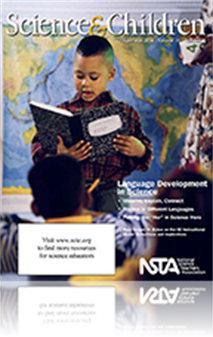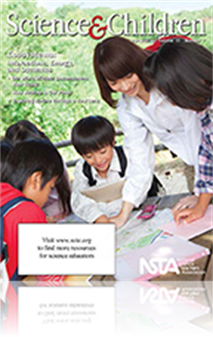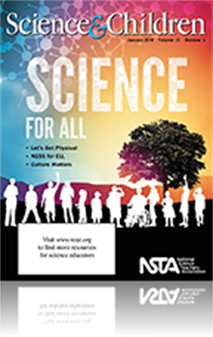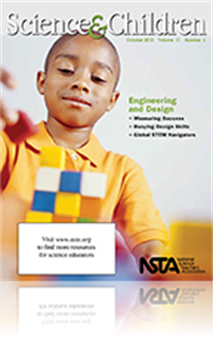All 5E resources
Journal Article
Teaching Through Trade Books: The Poetry of Plants
This column includes activities inspired by children’s literature. This month’s issue integrates language arts and science using nature-inspired poetry picture books to engage students in explorations of plants' life cycles and needs....
Journal Article
Teaching Through Trade Books: Let's Talk Trash
This column includes activities inspired by children’s literature. This month’s issue helps students focus on what trash is, which trash can be recycled, and where their trash ends up in the process....
Journal Article
Teaching Through Trade Books: The Science and Technology of Sound
This column includes activities inspired by children’s literature. This month’s issue explores questions surrounding the topic of sound....
Journal Article
Teaching Through Trade Books: Watching the Wind
This column includes activities inspired by children’s literature. This month’s issue has books that help children focus on what the wind can do so they can understand that wind has power and can be used to simply blow items around or generate wi...
Journal Article
Teaching Through Trade Books: Flying Machines
This column includes activities inspired by children’s literature. This month’s issue uses two fiction trade books to inspire students to design and test various flying machines....
Book Chapter
The purpose of this assessment probe is to elicit students’ ideas about relative distance. The probe is designed to find out if students can apply the same scale used to represent the difference in sizes between the Earth and Sun to also repre...
Book Chapter
The purpose of this assessment probe is to elicit students’ ideas about eclipse phenomena. The probe is designed to determine if students have a mental model of the Earth-Sun-Moon system that allows them to figure out why we see more eclipses of th...
Book Chapter
How Long Is a Day on the Moon?
The purpose of this assessment probe is to elicit students’ ideas about the day-night cycle on the Moon. The probe is designed to find out if students can coordinate two concepts: the Moon turns once on its axis each month, and half of the Moon ...







